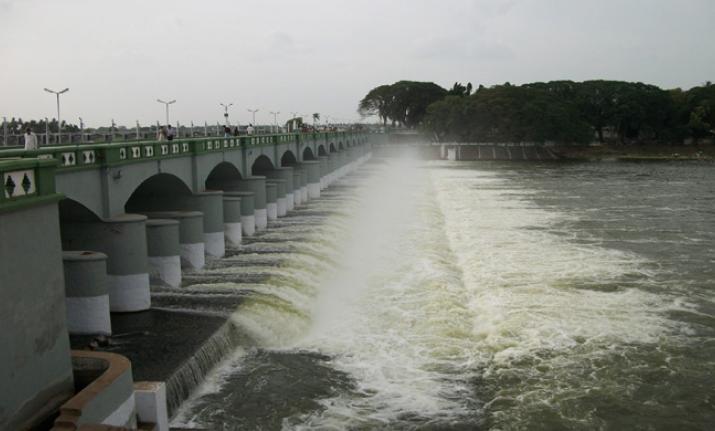
Last year flood in Cauvery, this year drought. Why complain?

Tamil Nadu is battling a massive drought. But only last year, more than 100 tmcft of water — at least seven years of supply to Chennai — was let out into the sea, since Karnataka where the river originates, had good rains and the surplus water was flowing into the state. Why couldn’t we save the water last year?
The 85-year-old dam and the largest in Tamil Nadu, the Mettur dam, provides water for agriculture in 14 Cauvery delta districts. More than 2.5 lakh hectares are irrigated with the water from this dam. It is one of the major drinking water sources for nearly 25 districts. With a capacity to store water up to 120 feet, it has water up to 47.65 feet.
From 2011, the sluices of the dam have not been opened for irrigation due to the less quantity of water. Now for the same reason, for the consecutive eighth year, the Tamil Nadu government has announced that it will not release water on June 12. However, the farmers are hopeful because the Cauvery Water Management Authority, the tribunal which set up on May 28, has ordered Karnataka to release 9.19 tmcft (thousand million cubic feet) to Tamil Nadu.
While, the order enabled the farmers of that region to keep faith in the authority, on the other hand, the absence of proper water conservation measures has remained a worry. In 2018, it was reported that more than 100 tmc Cauvery water has been let into the sea. Considering the shortage of rainfall this year in Tamil Nadu and the water level in many of the dams in the state are abysmally low, letting such a huge amount of water into the sea, instead of conserving it defies logic.
Experts in the field hold a different view and observe that the surplus water can be conserved through traditional practices like Kudimaramathu and Eri system.
In Tamil Nadu, whenever there is a heavy discharge of water from the dams following a good monsoon, we get reports of floodwater being released in to the sea. Besides, water levels in major rivers and canals breach banks, says Dr P Alli, Senior Assistant Professor in Economics, Vellore Institute of Technology.
“As a matter of fact, about 17 tmcft of floodwater was let out into the sea during August 2013, despite people facing acute water scarcity in the tail-end Cauvery delta region,” she adds.
One of the reasons why the Mettur Dam has let out such a huge volume of water into the sea is its capacity. The dam can hold about 93.47 tmcft water. Former public works department engineer A Veerappan cites another reason. “Last year, the Mukkombu regulator broke. That’s why the water merged with Kollidam. It is natural to let out surplus water to be let into the sea,” he says.
But is there a way to save surplus water to recharge groundwater aquifers? Another retired engineer Meenakshi Sundaram says the answer is ‘no.’ People who have little understanding of water spreads such misconceptions, he says.
“The surplus water should be discharged into the sea and it gets evaporated and then it comes in the form of rain. This is a cycle. Tamil Nadu is a plain region, we can save only seven per cent of rainwater on the surface level. Another six per cent gets into the ground. So the remaining 87 per cent of water should merge with sea. Terming that ‘water wasted’ is completely wrong,” adds Meenakshi Sundaram.
So, how could we save the surplus water? The answer lies in the traditional water management methods. Alli says, instead of investing huge amount of money on building new storage reservoirs, the need of the hour is to repair, renovate and rehabilitate the innumerable small water bodies such as lakes, ponds and tanks, which lie defunct.
“Let us not forget that Tamil Nadu is home to about 41,127 tanks. If concerted efforts are taken towards dredging the tanks and canals, then the surplus from Mettur dam can be stored to full capacity in tanks and canals instead of letting it into the sea. The state government should take serious steps in making the Kudimaramathu scheme workable throughout the year and not when there is water scarcity,” she adds.
K Saravanan, a water activist, says that the state government should take necessary steps to stop sand mining in the river beds. “Due to sand mining, water flow is being accelerated. Due to this the water cannot seep into the ground and hence the groundwater cannot be recharged adequately,” he says.
Adequate check dams and anicuts also need to be constructed across Kollidam and Cauvery rivers and in those areas where the discharge of floodwater into the sea is significant like in Nagapattinam, Tiruvarur and Thanjavur districts, emphasises Alli.
“This is because check dams not only preserve surface water, but also help in groundwater recharge,” she adds.


